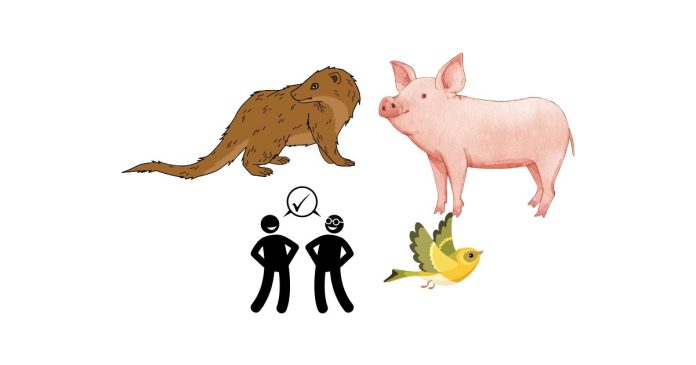Consumers that eat both plants and animals are called omnivores. Some examples of omnivores include:
Animals
- Humans – Eat a wide variety of plant and animal products.
- Bears – Such as brown bears and black bears, which eat fruits, nuts, fish, and small mammals.
- Pigs – Domesticated pigs and wild boars consume roots, fruits, and small animals.
- Raccoons – Feed on fruits, nuts, insects, and small animals.
- Birds – Some species, like crows, chickens, and seagulls, eat seeds, fruits, and small animals or insects.
- Primates – Certain primates, like chimpanzees, eat fruit, leaves, and occasionally insects or small animals.
- Rodents – Such as rats, which consume grains, fruits, and meat when available.
- Foxes – Particularly red foxes, which eat berries, fruits, insects, and small mammals.
- Turtles – Some species, like box turtles, eat plants, fruits, and insects.
Aquatic Omnivores
- Crabs – Consume algae, plant material, and smaller aquatic creatures.
- Some Fish – Like catfish and piranhas, which eat both plants and smaller animals.
- Sea Turtles – Some species eat seaweed and jellyfish.
Omnivores play a key role in ecosystems by maintaining balance between plant and animal populations.
Related posts:
- What does ringing in the ears mean spiritually?
- What Colors Do Blue and Green Make?
- How Long Does Raw Chicken Really Last in the Fridge?
- What are some amazing and memorable Valentine’s Day ideas that will leave a lasting impression?
- What is the definition of ‘friends with benefits?
- What is the difference between a bachelor’s and a degree?



